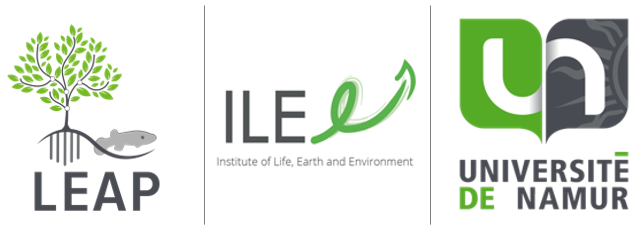Laboratory of Cellular Biochemistry and Biology (URBC) – Prof. M. Raes
We’ve been collaborating with the URBC for 10 years. The URBC is a leader in proteomics analysis, mainly the 2D-DIGE approach. They have developped mass spectrometry facilities for protein identifications. This collaboration has led to many international scientific publications.
The Unit of Theoritical and Structural Physico-Chemistry (UCPTS) – Prof. E. Perpète and Prof. C. Michaux
We’ve been working together on a reasearch project funded by the FNRS aiming to develop a workflow from protein profile to structural properties of proteins in aquatic animals exposed to pollutants. SPHERE Systemic Physiological & Ecotoxicological Research (University of Antwerp). Prof. R. Blust, D. Knapen and S. Husson.
SPHERE Systemic Physiological & Ecotoxicological Research (University of Antwerp). Prof. R. Blust, D. Knapen and S. Husson.
The group Systemic Physiological and Ecotoxicological Research of the University of Antwerp, Belgium, performs fundamental and applied research concerning key issues in environmental and adaptational biology. SPHERE focuses on how organisms respond to environmental changes, and does so at multiple levels of organization: from the molecular level (including genomics, proteomics and metabolomics), over the organismal level to responses of populations in real field situations.
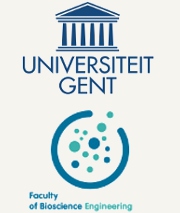 Laboratory for Environmental Toxicology and Aquatic Ecology (University of Gent). Prof. C. Janssen and Prof. K. De Schamphelaere.
Laboratory for Environmental Toxicology and Aquatic Ecology (University of Gent). Prof. C. Janssen and Prof. K. De Schamphelaere.
The laboratory aims to address the ‘extrapolation problems’ – in the aquatic environment sensu lato – one encounters when assessing ecological risk based on results from laboratory bioassays with single species. The bulk of the available bioassays typically consider effects of aqueous exposure of single data-rich stressors on one generation of one well-characterized species in a standardized test medium. In reality, however, subsequent generations of field populations are exposed via various uptake routes to complex mixtures of multiple (emerging and thus data-scarce) stressors, potentially exerting (toxic) stress constrained by their bioavailability in the natural water body. Unlike the organisms used in laboratory tests, exposed individuals may have different genetic architecture even when belonging to the same species. Lastly, species do not live in isolation, as is the case in single-species toxicity bioassays, but take part in natural food webs to sustain ecosystem functions and services.
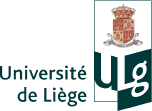 The Laboratory of Oceanology (University of Liège) – Dr. K. Das and Prof. J.-M. Bouquegneau.
The Laboratory of Oceanology (University of Liège) – Dr. K. Das and Prof. J.-M. Bouquegneau.
The objective oof the lab is to study and compare, in marine fish, turtles, birds and mammals, their biochemical and physiological responses facing pollutants (metals and organic persistent pollutants). The success of this study relies on the realization of three complementary parts: (1) to evaluate the influence of the diet and key periods of life (fasting, gestation, nursing, migration, moulting, spawning) on organic and metallic pollutant levels in marine vertebrates (fish, turtles, birds and mammals); (2) to elaborate in vivo and in vitro models for the four taxa to better understand the toxicity mechanisms and the effects of chronic exposure reflecting environmental levels ; (3) to develop so called “physiological-based models” to predict and facilitate toxicological risk assessment in marine vertebrates.
The Behavioral Biology Unit (University of Liège) – Dr. M. Denoël and Prof. P. Poncin.
The unit investigates the behavioural ecology of Vertebrates in natural and experimental environments through the study of social structures, mating tactics, communication systems, biological rhythms, space utilisation and population dynamics. Ultimately, we aim at characterising the ontogeny and plasticity of behaviours, their adaptive values for the individuals, populations and species, which intimately govern the evolution and biological diversity of animals.
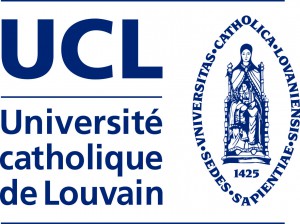 The Institute of Life Sciences (Catholic University of Louvain) – Pr. J-F. Rees, Pr. C. Debier, Pr. Y. Larondelle
The Institute of Life Sciences (Catholic University of Louvain) – Pr. J-F. Rees, Pr. C. Debier, Pr. Y. Larondelle
 Küeltz Laboratory (University of California Davis, USA) – Pr. D. Küeltz
Küeltz Laboratory (University of California Davis, USA) – Pr. D. Küeltz
Prof. Küeltz is a top leader in the field of environmental proteomics. Küeltz’s laboratory is part of the department of Animal Science at the University of California Davis and we’ve been collaborating with him since 2008. His research interests are the molecular and genetic basis of environmental stress response in aquatic organisms with an emphasis on salinity and pollution stress tolerance. Prof. Küeltz has recently developed a workflow of gel-free and label-free quantitative proteomics in aquatic organisms based on accurate mass and time tag quantitation of extracted ion chromatogram integrals. He is the world leading scientist in this domain. Prof. Küeltz published many scientific articles with high impact factors. He for instance published an article in Science in 2011 in collaboration with an international team on the ecoresponsive response of Daphnia genome. He was also the first to define a general stress response in fish on the basis of proteomics data.
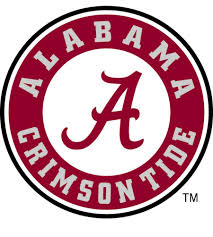 Earley Laboratory (University of Alabama, USA). Prof. R. Earley.
Earley Laboratory (University of Alabama, USA). Prof. R. Earley.
Earley lab focuses on understanding fish behavior by integrating evolutionary biology, ecology, neurobiology, endocrinology, physiology and molecular biology. Prof. Earley is a specialist of the mangrove rivulus. He has set up the rearing of different strains of the species in the lab and has currently several publications on this species. He has all the facilities to carry out experiments on rivulus of different age, to measure life-history traits and he has developed the methodology to analyse waterborne hormones released from rivulus. Moreover, he is one of the world specialist in behavioral analysis in fish and rivulus, such as behavioral type variation. He developed expertise for physiological analysis such as respiration, and for molecular biology since he participates to the rivulus genome sequencing project.
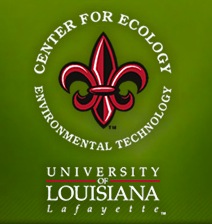 Klerks Laboratory (University of Louisiana Lafayette, USA) – Pr. P. Klerks
Klerks Laboratory (University of Louisiana Lafayette, USA) – Pr. P. Klerks
Long-term effects of environmental contaminants and other stressors on natural aquatic ecosystems.
- The development of resistance to environmental stressors in aquatic organisms.
- Consequences (physiological, fitness, genetic variation) of adaptation to environmental stressors.
- The potential for natural populations to adapt to global warming.
- The effect of exotic species in their new habitat, specifically their effect on the environmental fate of contaminants
- The interplay between benthic organisms and the behavior of environmental contaminants.
 Division of Health Science (University of Otago, New-Zealand) – Dr. A. Chatterjee
Division of Health Science (University of Otago, New-Zealand) – Dr. A. Chatterjee
Epigenetic events in disease and phenotype
- Documenting epigenetic alterations (DNA methylation and miRNA) in cancer progression (primary to metastasis) and testing the functional consequences of these changes in the laboratory ; continue to develop tools and statistical methods for accurate analysis of epigenomic datasets from next generation sequencing technologies (NGS) ; Profiling inter-individual epigenetic variation in humans ; Using zebrafish as a model to understand the role of DNA methylation in development and altered phenotype when exposed to environmental cue.
![]() Sih laboratory (University of California Davis, USA). Prof. A. Sih.
Sih laboratory (University of California Davis, USA). Prof. A. Sih.
Behavioral syndrome, behavioral responses to HIREC, antipredator behavior in human-altered environments, invasion ecology, predator-prey space use as an interactive game, parasites.
 Ecophysiological adaptations of aquatic animals during ontogenesis (AEO) (ECOSYM, University of Montpellier, France). Prof. J.-H. Lignot and Prof. G. Parmentier.
Ecophysiological adaptations of aquatic animals during ontogenesis (AEO) (ECOSYM, University of Montpellier, France). Prof. J.-H. Lignot and Prof. G. Parmentier.
Le trait fonctionnel étudié en priorité est l’adaptation à la salinité via l’osmorégulation. Les interrelations avec la nutrition sont envisagées. Les mécanismes d’adaptation et l’impact qu’ont sur eux les contaminants abiotiques sont étudiés dans une approche intégrative d’écophysiologie et d’écotoxicologie, particulièrement durant les stades ontogénétiques jeunes.
